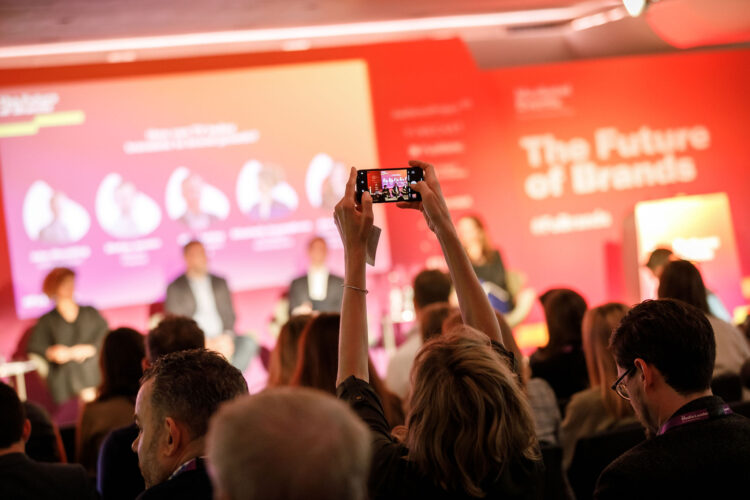Time for marketers to lead the media measurement debate at Future of Brands

Opinion: 100% Media 0% Nonsense
Media measurement is a tough topic that generates strong views but it’s crucial that the marketers who fund media through advertising have confidence in what they are buying. So we’ve got something special for our next Future of Brands conference, writes the editor.
Whenever I or my colleagues at The Media Leader ask advertisers what challenges they face with media, the M-word comes up more than any other key term.
Measurement — more specifically the issues of measuring audiences and ad campaigns across digital and linear media at the same time — is a persistent challenge no matter whom you speak to.
At our Future of Audio conference last month, four out of five of delegates polled picked “improving measurement” as the most pressing issue to sort out.
When we followed up with speakers about how the audio industry should prioritise improvement to measurement — do we generally need to improve how digital audio/podcasts are measured or is it more urgent to create cross-platform standards? — views varied widely.
Of course, some of this is down to media owners self-preservation in a changing industry. As our regular below-the-line commenter Nick Drew, CEO of Fuse Insights, said in response to that article, the single biggest barrier to single-source audio measurement isn’t methodological, it’s ideological.
“Radio stakeholders don’t want to measure non-radio content alongside radio content,” Drew says. “They realise that radio could potentially be at a significant disadvantage when ad buyers are able to see individual stations measured side by side, apples to apples, against digital behemoths like Spotify. And since RAJAR is the radio stakeholders’ sandpit, they’ve decided not to allow other audio platforms in.”
Groundhog Survey
At least Rajar reports publicly. The Pamco audience figures for newsbrand and magazines are no longer released publicly but are shared privately (some might say: secretly) with media agencies.
This doesn’t project an image of a sector with confidence. Or, to be frank, a sector which exactly expects anyone to pay attention anymore. Because if you do, weird stuff happens.
Last week we were sent a press release from Pamco which austerely informed us that 91% of British adults consume newsbrand or magazine content across a month. That’s pretty much all it said of note, but let’s be fair — it’s a strong number created with a strong methodology Pamco estimates readership on a trailing 18-month basis (most recently to December 2022) through a survey of 22,000 people.
But then things really changed in September 2022… no, only joking: 91% of British adults consume newsbrand or magazine media content across a month. As it was, too (no prizes for guessing) on 11 January 2023.
Personally I’d just like to know why 9% of us are so stubbornly rejecting news and magazines. It can’t surely be just a question of taste because this number never changes: are there areas of society that this sector is just failing to reach?
What we’re going to do next
Those are just two recent examples of how so-called ‘legacy’ media owners may face criticism for not adapting seamlessly to the digital era, where the entry of tech vendors into the system creates multiple issues around how online audiences are measured and verified.
On a wider scale, the UK advertiser trade body is working deeply on building Origin, the cross-media measurement solution, despite a lack of format support from the TV companies, whose own 40-year-old measurement company Barb has been steadily evolving to include audiences on major streaming platforms Netflix and Disney+ and most recently YouTube (albeit a very select range of professionally-produced content that is considered ‘fit for TV’). But to their credit, the UK’s Big Three commercial broadcasters have also spent the last two years collaborating on cross-measurement solution C-Flight, which has so far been received very well by media planners and buyers.
But let’s not forget that social media platforms have not signed up to any joint measurement standards or independent measurement in quite the same way. UKOM has reported on YouTube in the past and YouTube audience data is on schedule to be in Ipsos iris, the UKOM-endorsed service, in Q3 this year, while audience data for Facebook, Instagram, Snap, and TikTok is available in the Ipsos iris data.
But that’s in the UK and platforms are global. For all the political grandstanding in the US Congress last week, there were no tough questions lobbed at TikTok CEO Shou Zi Chew about how this apparently wildly popular media company actually assures the advertisers that fund its platform that what counts as a view is verifiable.
Ultimately advertisers, whose marketing budgets fund the vast majority of our (mostly) free and (somewhat) independent media system, can do more, too. So we’re going to use our opportunity at next month’s The Future of Brands to help them do exactly that.
This year I’m leading a session called The Great Measurement Debate, in which media owners, agencies, vendors and anyone else can hear it straight from the buy-side what needs to be done now.
I will open the session with an an analysis of the state of play of ad campaign measurement for buyers, cross-media measurement, currencies and metrics.
Then Simon Moore, director of marketing at Dreams will join me for a fireside chat to explore these themes in depth.
Next, Carl Bratton, head of marketing effectiveness at Direct Line Group, will help us look at whether ‘offline’ the missing piece in full effect measurement jigsaw.
And the session will conclude with a panel of media and insight specialists at major advertisers, including Gordon Black, paid media measurement director at Adidas.
As soon as we can reveal more information about the Future of Brands (25 April), we will do so through The Media Leader, as will our colleagues at Adwanted Events. The full agenda is very likely to go live later this week, as well as more details about my live interview with Sir John Hegarty, following our lively first encounter on The Media Leader Podcast.
Just because a problem is complex doesn’t mean it can’t be solved. Let’s embrace another M word: more. If we can bring about more conversation, more collaboration, and more progress in this industry, we might just encourage these brand leaders to spend more money on funding media, even in these straitened economic times.
This piece has been edited after publication to include information about UKOM
 Omar Oakes is editor of The Media Leader. 100% Media 0% Nonsense is a weekly column about the state of media and advertising. Make sure you sign up to our our daily newsletter to get this column in your inbox every Monday.
Omar Oakes is editor of The Media Leader. 100% Media 0% Nonsense is a weekly column about the state of media and advertising. Make sure you sign up to our our daily newsletter to get this column in your inbox every Monday.




